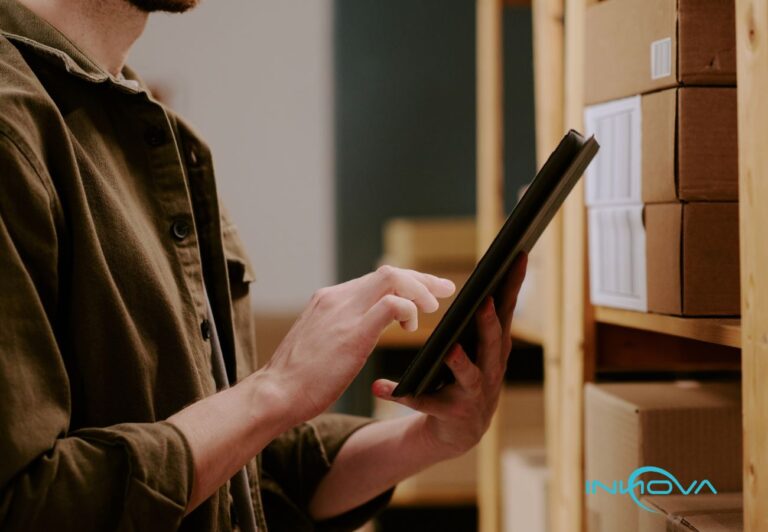Enjoy the Audio Version of the Article!
If you manage a purchasing department, you’re likely aware that handling Requests for Quotation (RFQs) in SAP is typically done manually or through various inefficient tools and channels, such as email.
In industries like Food & Beverages and Pharma, the stakes are especially high. Tight regulatory oversight, complex quality standards, and time-sensitive procurement cycles mean that any delays or errors in the RFQ process can cause significant operational and financial impact.
An RFQ that lacks complete technical details, sits in approval bottlenecks, or fails to reach the right suppliers can lead to costly consequences — from spoiled raw materials to delayed drug production. This makes streamlining the RFQ process in SAP not just a best practice, but a necessity for competitiveness and compliance.
This issue with RFQs in SAP is so widespread that we decided to create this article to compile both the challenges and the most effective solutions we’ve implemented to address this problem. Let’s begin.
 Below are the key features these types of tools offer to resolve the issues mentioned:
Below are the key features these types of tools offer to resolve the issues mentioned:
Why the RFQ Process is Critical in Food & Beverages and Pharma
In these industries, procurement isn’t just about price and delivery – it’s about ensuring the safety, efficacy, and compliance of every purchased component, and it’s about works on tight schedules dictated by shelf life. Procurement teams must ensure that ingredients, packaging materials, and processing equipment arrive on time, in the right quantity, and meeting all quality standards. A delayed RFQ approval for a critical ingredient can mean missing a production batch, while poor visibility of supplier responses can lead to last-minute purchasing at unfavorable terms. Any disruption in sourcing can halt production lines, delay product launches, and risk non-compliance with agencies like the FDA or EMA. RFQs must capture every detail, from GMP certification to stability data requirements, and must be traceable for future audits.Current Situation Regarding RFQs in SAP
The main issue with RFQs in SAP is the fragmentation of processes. It’s common to see RFQs sent to suppliers via email, with data then transferred into Excel spreadsheets for price comparison, and documents manually stored in shared folders. This fragmented approach often leads to errors and a loss of traceability: key information can get lost among emails and files, causing delays and poor decisions about which offer is most advantageous. In short, a process as critical as procurement tenders becomes slow and error-prone when managed outside SAP’s structured workflows. When RFQs are managed without a standardized process, each buyer may follow their own method. Supplier quotes arrive in various formats (PDFs, Word’s, PPT’s, URL´s, etc.), making it difficult to consolidate and compare proposals. Moreover, the lack of a centralized channel requires manual follow-up: phone calls for reminders, document searches across email threads, and multiple versions of the same quote stored in different locations. All of this adds administrative burden to the procurement department and undermines process transparency. When a supplier inquires about the status of their proposal or a manager wants to review how a vendor was awarded, the information isn’t readily available in SAP—it’s scattered across emails or local files. In summary, the lack of integrated RFQ management leads to inefficiencies that affect both operational performance and decision-making quality.Main Challenges of RFQs in SAP
- Lack of automation in the creation and submission of requests: Issuing an RFQ typically requires numerous manual steps. For instance, when using standard SAP functions, it involves generating a PDF or printed document for clauses and then sending it via email to each supplier. There is no centralized platform that can be used to launch RFQs and notify vendors simultaneously with all terms and conditions. This reliance on manual steps contributes to the process’s slowness and vulnerability to oversight.
- Lack of centralized reception of supplier quotations: Suppliers’ responses arrive through various channels and various formats, making the information susceptible to errors or missing bits, which makes it tricky to compare apples with oranges.
- Manual and subjective comparisons of quotations: Analyzing the received offers in SAP is usually done by copying data into spreadsheets and comparing prices manually. This approach is not only time-consuming but also error-prone, and each evaluator might assess the proposals differently, lacking standardized evaluation criteria. As a result, decisions may be made based on inaccurate or incomplete comparisons, potentially overlooking the most advantageous offer.
- Balancing technical and commercial evaluation criteria is a major challenge in Pharma and Food & Beverages. Procurement decisions in these industries extend far beyond price, requiring careful assessment of product quality, compliance with strict specifications and certifications, and reliable delivery timelines that safeguard both production continuity and regulatory obligations. At the same time, commercial aspects such as payment conditions and delivery terms are equally important. When handled manually, combining these factors objectively is difficult. Organizations often rely on complex Excel scoring sheets, which make the process slow, error-prone, and less transparent, ultimately complicating the fair comparison of supplier offers.
- Loss of documents and lack of traceability represent a significant risk. In Pharma and Food & Beverages, where strict compliance and transparency are essential, relying on scattered emails, phone calls, and file attachments often results in misplaced documents or missing records. This not only slows down the RFQ process but also undermines accountability. Without a clear audit trail, it becomes difficult to demonstrate why a supplier was rejected, to trace the history of evaluations, or even to locate the final approved version of a winning proposal. Such gaps in traceability can compromise regulatory compliance in pharma or quality assurance in food & beverages, making the lack of centralized documentation a critical weakness.
- Involvement of Unqualified or Non-Compliant Suppliers: Without robust controls during the preselection phase, organizations risk inviting vendors that fail to meet essential requirements — such as regulatory certifications, quality standards, or company approval processes. At the same time, potentially suitable suppliers may be excluded simply because they were not visible or formally registered in the system. This lack of transparency creates inefficiencies and increases compliance risks, especially in industries where adherence to GMP, food safety, or traceability regulations is non-negotiable. Ultimately, the absence of standardized and auditable supplier selection criteria can result in both the wrongful inclusion of unfit vendors and the exclusion of qualified partners, undermining the fairness, accountability, and regulatory security of the RFQ process.
Strengthening the RFQ Process in SAP for Pharma and Food & Beverages
The challenges faced in these industries can be mitigated by implementing specialized digital solutions that extend SAP’s native capabilities. In sectors where compliance, traceability, and timing are critical, tools like Innova’s SiGO integrate directly with SAP ECC and S/4HANA to address the limitations of the standard RFQ process. SiGO brings greater automation, structured workflows, and integrated evaluation criteria, enabling procurement teams to handle complex tender processes with transparency and regulatory alignment. Rather than replacing SAP, SiGO complements the MM module, allowing pharma and food & beverages companies to manage the entire RFQ cycle in a controlled, auditable, and user-friendly environment. Below are the key features these types of tools offer to resolve the issues mentioned:
Below are the key features these types of tools offer to resolve the issues mentioned:









